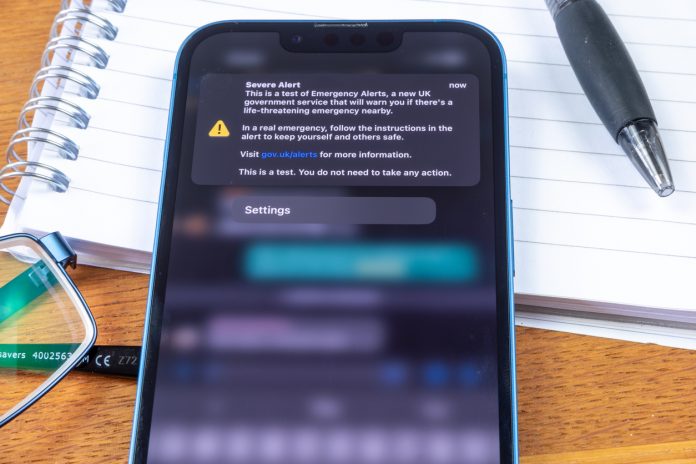Tom Rahder, from business communications provider, Esendex, discusses how using mobile messaging can improve a local authorities’ productivity and efficiency as pressures on finances and services continue to rise
In the recent Spring budget, improving public sector and local authorities’ productivity emerged as a major priority for the central government as it committed millions to drive efficiencies and ensuring every penny of taxpayers’ money is well spent.
At a time when local authorities are facing significant financial pressures and their spending is under tight scrutiny, it’s extremely important to find ways to reduce administration costs and make the best use of their available resources, while also still providing the best possible service to the communities they serve.
As council tax is so crucial to a council’s income, collecting payments promptly is critical to maintaining the quality of their service delivery. Similarly, being able to quickly communicate updates to residents and businesses can transform how they engage with the community and efficiently deliver public services.
Technology can play a huge part in meeting both of these requirements, but it doesn’t have to be complicated. Sometimes, just using a text message can have a big impact on the outcomes. It can free up staff to work in other areas and ensure their time isn’t wasted making fruitless phone calls.
Quick and convenient ways to improve local authorities’ productivity
For a long time, letters and posters through the letterbox were an effective way for councils to communicate with residents. Over time this shifted to email and social media to get messages across.
However, as more than nine out of 10 people in the UK now own a smartphone, reaching residents through mobile phones is even easier. It’s a really convenient way to notify people of specific services or events, direct them to self-serve portals for online payments or send reminders.
Given SMS’s instant and personal nature, it’s an ideal channel for communicating key messages quickly. In recent years, we’ve seen councils use text messages in a range of ways, from chasing council tax arrears and application completions to notifying people in emergencies such as flood warnings or road closures.
Effective mobile messaging strategies can tackle some of the most time-consuming tasks with automated messaging, reducing the need for posting letters and making phone calls. This, in turn, reduces admin workloads and can be cost-saving.
Connecting with residents through their preferred communication channels can often see greater engagement with the community too. Residents receive text messages instantly on their phones and can take action right away or respond much quicker.
In return, councils say they have seen better engagement from residents. They’ve recovered millions in unpaid council tax debts and even seen a reduction in missed appointments, which all help to achieve efficiencies across the board.
Frictionless debt recovery
We’ve seen a range of examples of how councils have successfully used mobile messaging to connect with the community and improve their own productivity.
One example is Rotherham Council, which was able to collect £1.8m in council tax arrears between June 2022 and June 2023 after it began using text reminders and a mobile payments portal as a frictionless method of recovering debts.
In replacing resource-intensive letters and phone calls for issuing reminders and summons, the payment process was streamlined for residents. The council had less of a need for in-person visits, and staff were reassigned to other debt collection activities instead.
There was a dramatic change in how people interacted with the council. Its mobile system, which incorporated reminder SMS messaging and an online payment portal, saw monthly payee responses of between 17% and 44% and click-through rates of between 34% and 67% from recipients engaging with the council’s message.
Rob Cutts, head of service, revenue, benefits and payments at the council, said they’d seen a “faster, more secure and convenient way for customers to make council tax payments,” as well as increased payments and a reduction in staff admin time.
He added: “By reducing the number of required stages for customers, and by automating and pre-filling much of the account data, we have reduced friction and dramatically increased collections through this process.”
It’s a similar story at Brighton & Hove City Council which has integrated SMS messaging into its existing software solution to help improve communications and achieve its vision to modernise access to its services.
In a bid to become paperless, the council began using texts for council tax reminders, blue badge renewal notifications and managing HGV levies. It also set up a council tax account portal to target customers through bulk or individual text messaging on keeping up-to-date with their instalments.
The council said it received great feedback on its communications, which resulted in more residents setting up direct debits so they didn’t receive reminder texts again.
Nicky Donaldson-Alldis, the council’s systems program manager, said texts were “an easy and affordable way to instantly communicate with a targeted audience.”
She added: “Text messages can be used to rapidly engage with customers to remind them that a payment is due or that further information is required. We found that this prevents further recovery action, saving time and money for both the customer and the council.”
Invaluable messaging: Finding modern ways to improve local authorities’ productivity
Texts can be effective not just for council tax reminders and debt recovery. They’re also a fast way of sharing information, especially in emergencies when timing is everything.
For Leeds City Council, SMS has proved successful in communicating critical messages with local businesses. It set up the LeedsAlert service for businesses to register and receive news on local fires, road closures, and disruptions in the city centre, such as protests or marches.
An emergency planning resource officer at the council said the two-way messaging system has “proved invaluable” to communicate easily with local businesses in an emergency. When the Tour de France arrived in Leeds, SMS played a vital part in keeping businesses up-to-date with the rolling road closures and was used by stewards to divert people away from the most crowded areas and track down two lost children.
The use cases for text messages are endless. Sometimes, the most simple function can have the greatest impact, and given that most people rarely leave their house without their mobile phone these days, text messages are ubiquitous and still the most instantaneous and effective way to communicate with them. SMS remains as relevant today as ever, so it’s an obvious mode of communication for councils that are looking to save money and time and reach their residents and customers quickly.
This piece was written and provided by Tom Rahder, from business communications provider, Esendex













